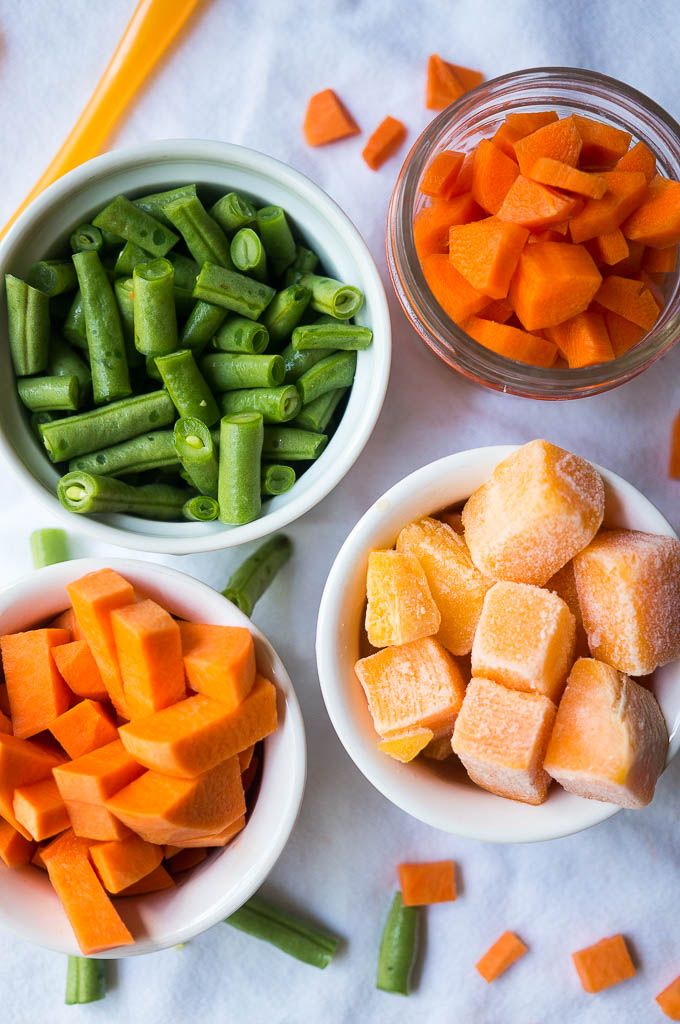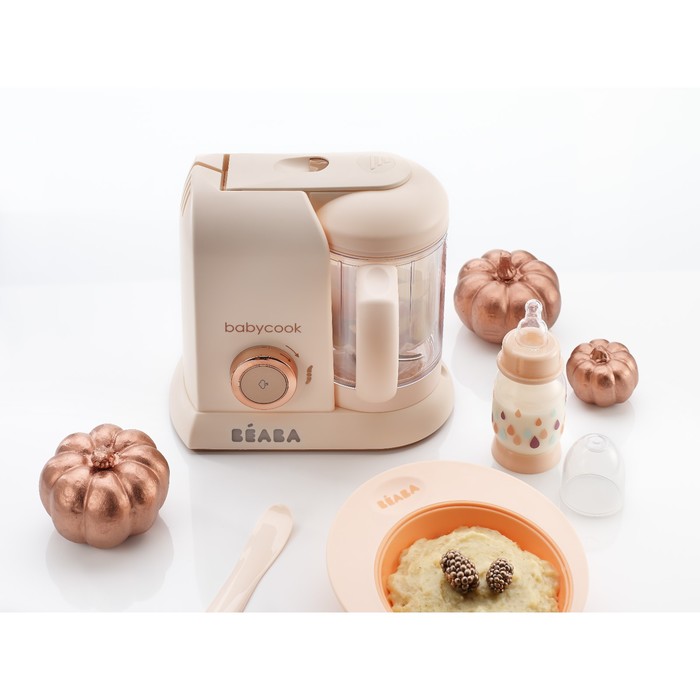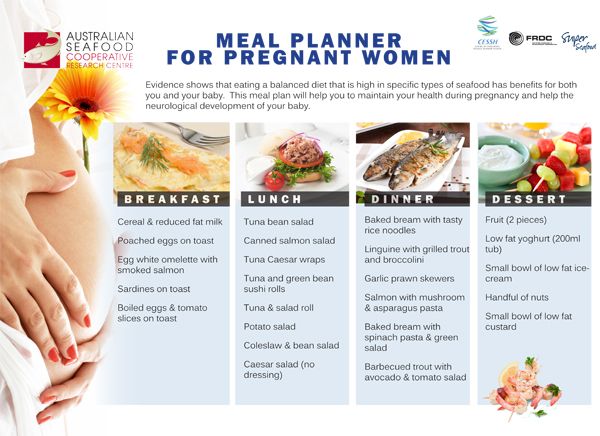Instant baby food for travel
Travel Food Ideas for Babies and Toddlers
Gone are the days when parents used to wait till their kids were grown up to travel. Nowadays, little babies travel everywhere, exploring the great big world with their inquisitive eyes. Of course, modern conveniences have definitely made life easier for Mom and Dad!! But in spite of everything, one point of worry for parents is what to feed their children while travelling.
34 Easy Homemade Travel Food Ideas for Babies and Toddlers
Milk
Fruit
Instant Porridge
Main Meals – Lunch
Snacks
Tips for Feeding your Baby at a Restaurant
If your baby has recently started on solids, you might also want to check out our detailed post – High Chair Vs Booster Seat: Your Ultimate Guide to Buying a Feeding Chair. Some of the feeding chairs recommended in this article are travel friendly too!
Buy Healthy Nutritious Baby, Toddler food made by our own Doctor Mom !
With all the scare about packaged food and unhygienic food preparation in restaurants, parents would rather carry their own food with them. Needless to say, this requires quite a bit of planning, but we’re here to help!! Here is a list of convenient and healthy travel foods for babies and toddlers.
Milk
If you are breastfeeding your baby then he won’t need any other milk supplement at least for the duration of your journey. If he has already been weaned, you can try these substitutes for milk:
- Formula
- Milk powder (commercially available)
All you need to do here is to add hot water, which you can carry in a thermos flask.
Fruit
Fresh fruits are one of the best travel foods, being convenient and and hygienic. For toddlers, you can just cut up the fruit and feed them. For babies, you can mash and puree fruits like papaya, muskmelon, banana or chikoo. When ripe enough, they can be easily mashed with just a fork.
Instant Porridge
Here is a list of 15 instant porridge powder recipes, all of which require only hot water to be added.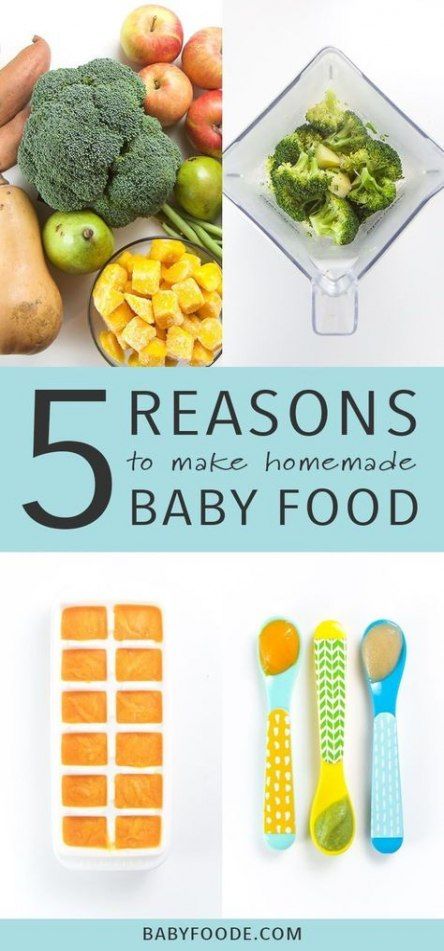
No time to make these powder, no worry !! Just click, order and get home delivered here. We also have Instant food ‘trial’ packs available now, because you can never tell what the baby might like!
Main Meals – Lunch
Main meals like lunch and dinner are a little more difficult to handle while travelling as it isn’t easy to prepare a filling rice meal on the go. However, you can still work your way around this problem with a few tips:
1. If you have a rice cooker then all you need to do is plug it in to make a simple khichdi with carrots or potatoes. You can carry carrots and potatoes as they last for more than 2 to 3 days without refrigeration.
2. If you don’t own a rice cooker, dry roast rice and dal well and make grind to a powder. You can carry this powder in an air tight container and cook it with hot water from your flask. You can also add grated carrot, which doesn’t take long to cook.
If you don’t have time to dry roast rice and dal, you can easily order homemade Instant Khichdi mixes here.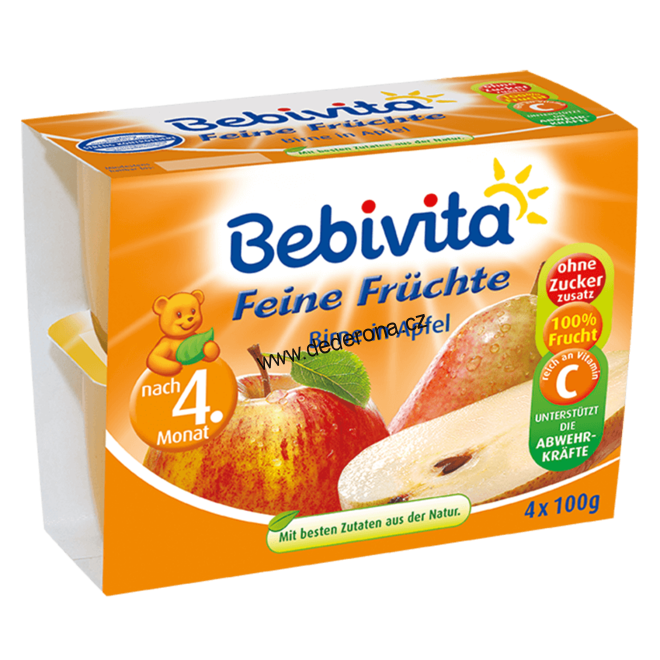
3. If you want to give lunch from a restaurant, ask for steamed hot rice with dal. Mash it with sanitized fingers or spoons and feed your baby.
Snacks
When it comes to snacks, most parents reach out for packaged foods like biscuits. But you can go healthy here too, especially since toddlers snack a lot and you don’t want so much junk going into their bodies! Try these homemade snack recipes that don’t require refrigeration.
- Laddus
- Cookies
- Roasted chickpeas
- Energy bars – Groundnut Bars, Maple Oat Cluster Bars , Chocolate trail Mix
Tips for Feeding your Baby at a Restaurant
Sometimes, you find yourself with no option but to feed your baby from a restaurant. In such cases, there’s no need to panic; just keep these few tips in mind:
1. Never give raw foods like salads to chutneys to babies
2. Along with raw foods, you should also avoid dishes with raw ingredients like mayonnaise, souffle, sushi etc.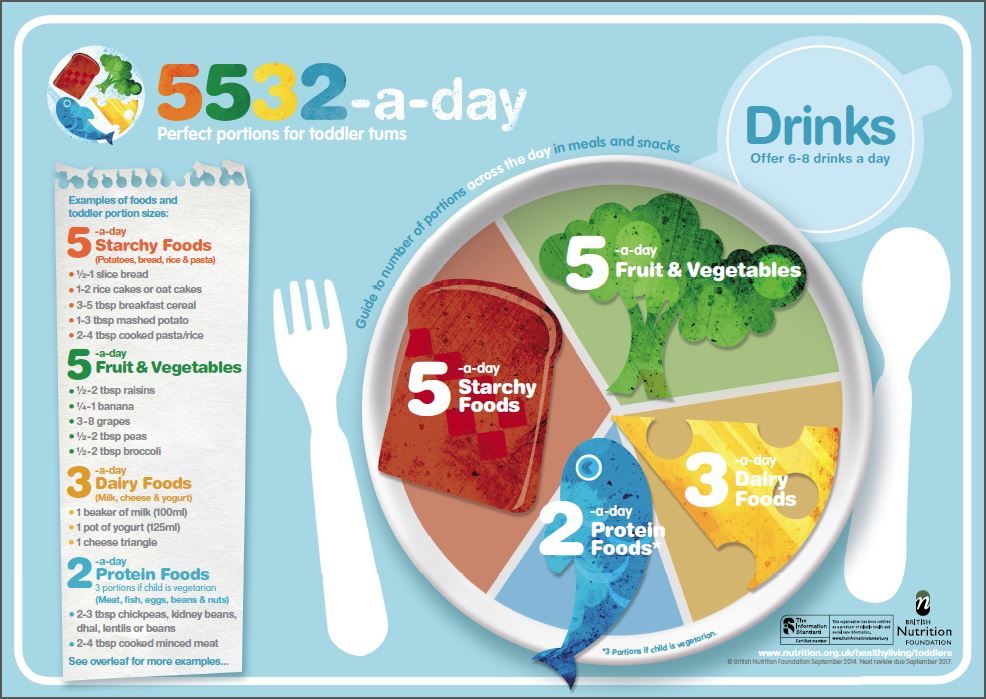
3. Always try to go for steamed foods – steamed rice, steamed idlis and cooked vegetables.
4. Use your own cutlery.
5. Ensure there are no choking hazards in baby’s food.
6. Avoid trying new foods as your baby may be allergic to it.
7. Stick to boiled/bottled water and don’t give baby juices or milkshakes.
8. Stay away from anything with artificial coloring or flavoring.
Feeding your baby or toddler during travel needn’t be a huge source of stress! With just a little effort on your part, you can ensure that you and your child enjoy your journey, without any worries about food!!
If your baby has recently started on solids, you might also want to check out our detailed post – High Chair Vs Booster Seat: Your Ultimate Guide to Buying a Feeding Chair. Some of the feeding chairs recommended in this article are travel friendly too!We have compiled a comprehensive Travel Food packing List for Babies and Toddlers
Authors
- Dr Hemapriya
- Fabida Abdullah
- Dhvani Shah
Buy Healthy Nutritious Baby, Toddler food made by our own Doctor Mom !
Shop now!Baby Food while Travelling - Easy, Healthy & Instant Food Options
Planning a trip with your baby? Whether it is a few hours of outing or a vacation, a mom’s holiday planning bloats with ‘What should I feed my baby while travelling?’ Fortunately, quite a few healthy yet easy to make or ready-to-eat meals & snacks options are possible.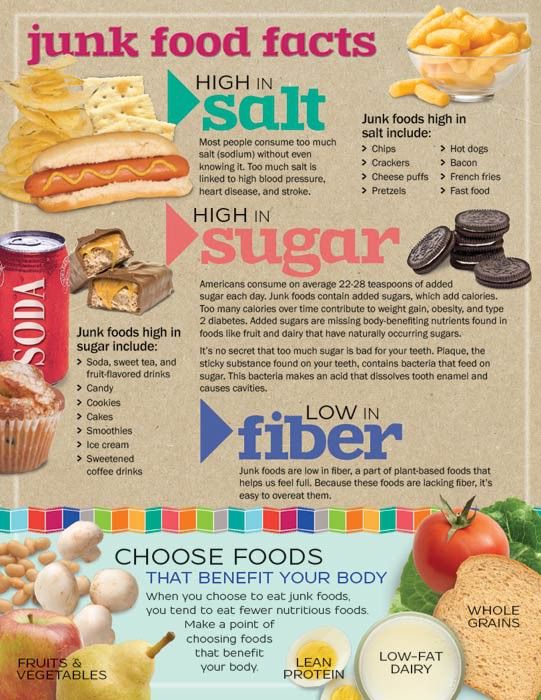
Read more to find out quick and easy healthy food options for your baby while travelling.
Should you carry baby’s food while travelling?source: https://goo.gl/VnQbz1
With the right facilities, a baby can accompany parents on fun trips, social events or even for running errands from 8-12 weeks. Thanks to modern-day conveniences which facilitate such travels with very young tots. However, one big worry for parents is “what to feed my baby while travelling”.
Many parents in India are sceptical to expose their kids, especially younger than 1-1.5 years, to outside food especially from new pantries/eateries. Parents also fear using packaged & ready-to-eat foods due to the presence of preservatives, colouring agents etc..
You can opt for carrying baby’s food while travelling. If you intend to take the baby’s food, plan a bit in advance. Because, depending on your baby’s food preferences, you may need to prep for baby’s travel food. Choose from the easy to make and healthy travel food options.
Also, these days many hotels/resorts are very baby friendly. They take great care to prepare baby food as per request.
Based on the cooking facilities at your travel destination and type of food your baby enjoys, you can also opt to carry raw ingredients (or buy fresh local ones) and cook baby food at the destination.
Planning for baby meals when travellingTravelling with a baby means inflated luggage. You want to minimise the hassle of carrying, preparing or feeding baby food while travelling. Remember the following when planning to pack your baby’s travel food:
- Plan age-appropriate travel food
- Avoid introducing new food during travel to avoid allergy scare
- Carry food that is easy to store and not highly perishable
- Procure containers for carrying/storing that are compact and spill-free
- If headed to a destination, check facility for storing/heating/cooking food
When travelling with a baby who has not started solids, no planning is required. If your baby is formula-fed arrange boiling water and Formula.
If your baby is formula-fed arrange boiling water and Formula.
For babies who have solids, plan for snacks & meals during your time outside. Also, you can (and should) explore the local food at the destination if your child shows interest.
But babies, especially when new to solids, are unpredictable when it comes to adjusting to an unfamiliar place/food and hence it is safe to plan for all of baby’s meals in advance rather than be sorry in a new place.
Healthy & easy baby food options during travelThere are various ways to plan your baby’s meals when you are travelling. You can either pack ‘ready-to-eat’ meal options. Or carry ‘instant-to-cook’ food. Or plan to cook fresh meals. Depending on the place you travel and your comfort with serving locally sourced food, you can also opt to feed your child from local eateries or fresh local produce.
Following are some of the travel food options for your baby. Ensure age-appropriateness:
Travel food to prepare at the destination:- Fruit/veg puree
- Porridge
- Instant hot meals: Khichdi/Poha/Upma
- Pancakes
- Cerelac/SathuMaavu
- Sandwich*: Veg/Cheese/Butter
- Cereals
- Puffed rice/Puffed jowar (plain or roasted)
- Homemade laddoos/biscuits/cookies
- Milk/Formula
- Roasted makhana
- Thepla
- Homemade Chivda
- Packaged baby snack options
- Idli*
- Seasonal Fruits
- Yoghurt / Smoothies
- Milk
- Seasonal Veggies
- Cheese slices/cubes
- Local food specialities
Note: *Idli, sandwich are great options during the commute, especially when you have a long journey to travel destination.
Some of the food options, especially to be prepared at the destination may need prep like pre-roasting/grinding before the travel. If you are pressed on time to prep for baby’s travel food, or you want to have a variety of options, buy from some baby food brands which are tried, tested and vouched for by many many moms:
Some of the popular travel food options from popular baby food brands are:
- Gerber – cereal snacks
- My Little Moppet Foods – Instant mixes: SathuMavu, porridges, cereals, Indian pancakes, Khichdi
- Early Foods – Instant mixes: Porridges, SathuMavu, Khichdi, cereals, cookies
- MTR – Instant meals: poha/upma/ halwa, Indian pancake mixes
- Soulful – Multigrain loops, Ragi bites/flakes, Millet muesli
If you are planning to prepare baby’s meals when travelling, have items to aid cooking/storing/cleaning. Pack items that can be used for multiple things or buy items easily available at the destination to reduce your luggage. Plan for the following items:
Pack items that can be used for multiple things or buy items easily available at the destination to reduce your luggage. Plan for the following items:
- Baby cutlery: steel plate (also converts as cutting board, cover), baby sipper/cups/glasses, spoon (for mixing/serving)
- Utensils & cooking items: Flat base pan (doubles for cooking hot meals including pancakes), knife/peeler, travel cooker/hot plate to make hot meals*
- Cleaning accessories: soap, scrub, bottle cleaning brush, drying napkin
- Basic tastemakers: oil/ghee/roasted jeera powder/ajwain/ hing (use sugar/salt from destination)
- Storage containers: Compact thermos/flask to store milk or water; spill-free unbreakable and compact jars for carrying raw ingredients/meals
*You can also use tea-pot in hotels to boil water to prepare instant meals/formula.
Note for flights & international travelsVerify compatibility of voltage rating/plug point of your electrical equipment (travel cooker/breast pump) when travelling to foreign destinations.
Check for carry-on liquid & food restrictions (water/milk/formula) with your airlines & at airports for carry-on meal arrangements.
Some quick recipes to cook baby food when travellingFollowing are a few recipes that you can cook while travelling in under 10-15 minutes:
1.Porridge recipe- Main Ingredients: Ragi powder, water
- Optional ingredients: Jaggery, Fresh fruit, dry-fruit powder, milk
- Prep before travelling:
- Dry roast ragi powder
- Preparation:
- Take 2-3 spoons ragi powder, add water as per consistency required
- Mix well to remove chunks
- Heat for 5-8 minutes stirring occasionally
- Optional: Add jaggery, grated fresh fruit, dry-fruit powder or milk as per taste after heating
- Note: If no heating equipment, add boiling water to the powder, stir to remove lumps and covered for 5-8 minutes
- Easy replacements: You can use sooji, Dalia, oats, Sathumaavu, or Makhana instead of ragi powder.
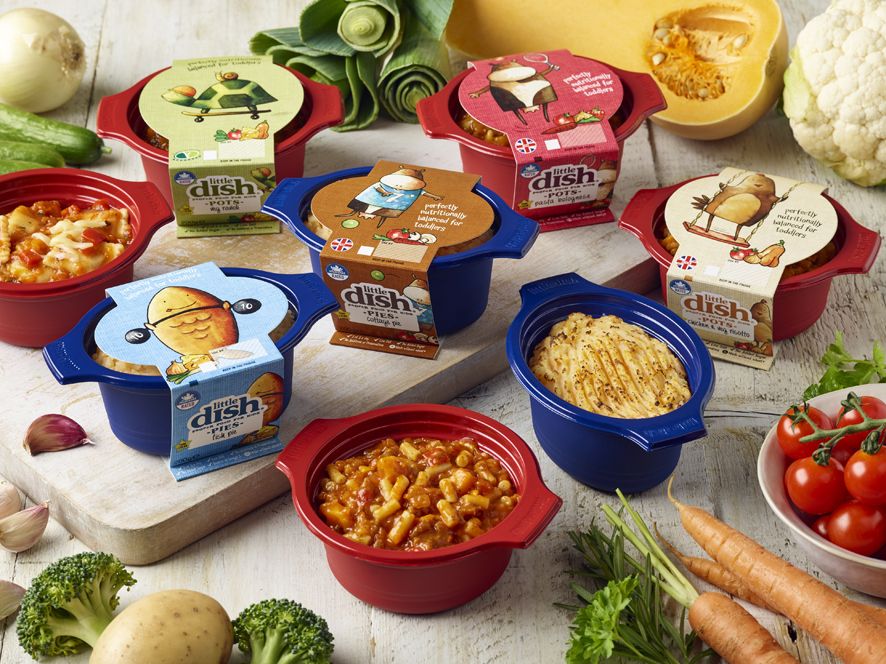 Dry roast the ingredient. Depending on your child’s preference you can grind it if required.
Dry roast the ingredient. Depending on your child’s preference you can grind it if required.
- Ingredients: Yello moong daal, rice, water, ghee
- Optional ingredients: Tastemakers like Jeera powder/hing/salt; grated veggies
- Prep before travelling:
- Wash moong daal and rice separately (ratio 1:2),
- Dry well (avoid excess sunlight)
- Separately dry roast
- Let it cool then grind
- Mix well
- Note: If you have no time to wash & dry daal and rice, directly dry roast them
- Preparation:
- Take 2-3 spoons of khichdi mix, add water as per consistency required
- Stir to remove lumps
- Optional: Add tastemaker, grated veggies as per taste
- Heat for 5-10 minutes stirring occasionally
- Add ghee after heating
- Note: If no heating equipment, add boiling water to the khichdi mix, stir to remove lumps, add tastemaker & veggies (optional) and cover for 5-8 minutes
Note: If a baby prefers regular khichdi, carry Yellow moong daal & rice grains mixed (1:2 proportion). Soak the mixed grains for 15-20 minutes & cook (in hotel kitchen/in travel cooker/open vessel).
Soak the mixed grains for 15-20 minutes & cook (in hotel kitchen/in travel cooker/open vessel).
- Ingredients: Raagi powder & besan mix (2:1), oil/ghee
- Optional ingredients: grated veggies, tastemakers like salt/jeera powder etc., curd
- Prep before travelling: dry roast ragi powder and besan separately and then mix
- Preparation:
- Take 2-3 spoons of ragi besan mix, add water to make a smooth
- Optional: Add chopped/grated veggies, curd and tastemaker of your choice
- Keep pan for heating, grease pan with oil/ghee
- Pour batter on the pan, flip after 2-3 minutes
- Cook well on both sides
- Easy replacement: Use green moong daal powder, sooji in place of ragi & besan
Travelling with your baby is fun if you are sorted on food-front. Carry easy-to-make and yummy food options for fuss-free meals while travelling. Plan a bit and prep for baby’s travel food if required. Happy travelling with baby:-)!
Carry easy-to-make and yummy food options for fuss-free meals while travelling. Plan a bit and prep for baby’s travel food if required. Happy travelling with baby:-)!
Eating tasty and safe food during a long train journey is not an easy task, especially if the trip falls on a hot season. It is risky to eat in railway station cafes, and it is also expensive in the restaurant car. How to organize meals on the road so as not to remain hungry and not become a victim of food poisoning? What products to take on a train in the summer and what is better to refuse? Travel tips. nine0004
Eating on the Train: The Three Nos Rule
No to Perishable Foods
When compiling your travel menu, give preference to foods that can be stored at room temperature. No salads with mayonnaise or sour cream dressing, sandwiches with caviar or boiled sausage, cream cakes.
If your trip will last less than a day, a portable cooler bag is what you need. Take care of freezing special cold accumulators in advance: they will help keep food fresh and drinks cold for several hours. nine0005
Take care of freezing special cold accumulators in advance: they will help keep food fresh and drinks cold for several hours. nine0005
"No" to strong-smelling foods and dishes
Boiled eggs, grilled chicken, sauerkraut and pickles, onions, garlic, smoked meats, any fish dishes and preserves, fast food, some types of cheese - the worst food on the train. Their smell in a stuffy enclosed space is a real test for others. Take care of fellow travelers, do not take strong-smelling products with you!
"No" to food that crumbles and gets dirty
Choose only those foods and dishes that are easy and convenient to use. If the food needs to be cut, discard it or cut it in advance and pack it in an airtight container. Do not take with you something that stains your hands, clothes and everything around. Seeds, in-shell nuts, crackers, chips, juicy berries or fruits splashing with juice are not the best choice for a train. nine0005
What to take on the train: a list of the best food and dishes for the train in jars, cereals and berry jelly from bags.
 They are affordable, easy to prepare, do not require special storage conditions, which is very important in train conditions.
They are affordable, easy to prepare, do not require special storage conditions, which is very important in train conditions. What to take on a train in the summer if you don't want to eat semi-finished products? There are many options. nine0005
Vegetables and fruits . Thoroughly washed, dried and packed in a container, fresh fruits and vegetables will be a great snack on the road. Choose only the strongest specimens without signs of damage and damage. Hard, crunchy vegetables (cucumbers, carrots, sweet peppers, stalked celery) can be peeled and cut in advance, but they will have to be eaten first. You can also bake or boil potatoes in their uniforms - they can be stored without a refrigerator for a day. nine0005
Nuts and Dried Fruits is another healthy snack option that doesn't require special storage conditions. Just do not be too lazy to wash and dry dried fruits before the trip.
Canned vegetables . Green peas, beans in their own juice or corn are also suitable as "travel" food. If you plan to take a jar of zucchini caviar with you, remember that it is not recommended to store this product without a refrigerator after opening.
If you plan to take a jar of zucchini caviar with you, remember that it is not recommended to store this product without a refrigerator after opening.
Meat and poultry . A great idea for a healthy and satisfying snack on the road is fried with spices or baked chicken fillet, as well as baked beef (veal), boiled pork or roast beef. Pieces of chicken fillet or thinly sliced meat are ideal as a filling for sandwiches and lavash rolls. Just do not pack the meat in plastic wrap or a bag, as it will spoil much faster. You can also take small meatballs or meatballs from minced meat or chicken without sauce on the road. They do not need cutting and are tasty even when cold. nine0005
Bakery and bread . Unsweetened portioned pastries are a real find for those who have to travel by train. All kinds of snack muffins (with zucchini, ham, olives), khachapuri with cheese, homemade pies with potatoes or cabbage can be stored without a refrigerator for several hours. Sweet pastries should not be stuffed with cottage cheese or cream, it is better to choose simpler products, for example, pies with apples, prunes or dried apricots, buns with raisins, nuts or cinnamon. Choose bread already sliced and do not store it in a plastic bag - it can get moldy there. nine0005
Sweet pastries should not be stuffed with cottage cheese or cream, it is better to choose simpler products, for example, pies with apples, prunes or dried apricots, buns with raisins, nuts or cinnamon. Choose bread already sliced and do not store it in a plastic bag - it can get moldy there. nine0005
Sweets . Dryers, bagels, gingerbread, cookies, biscuits, chewing marmalade, marshmallows, marshmallows are stored without a refrigerator and do not stain your hands much. Chocolate, chocolate bars and candies, and chocolate-coated items may melt. It is better to store them in a cooler bag or not to take them at all.
Vacuum packed products . Hard cheeses and raw smoked sausages packed under vacuum conditions can be stored without a refrigerator for 24 hours without losing their taste. In no case do not buy boiled or liver sausage on the train: without a refrigerator, they spoil rather quickly and cause severe food poisoning. The same goes for pâtés. If you plan to take processed cheese on the road, it is better to store it in a thermal bag. nine0005
If you plan to take processed cheese on the road, it is better to store it in a thermal bag. nine0005
Dairy and fermented milk products . If your trip will last several hours, drinkable and traditional yoghurts, fermented baked milk or kefir, as well as glazed curds and cottage cheese casserole, are suitable as a light and tasty snack. It is recommended to transport these products only in a thermal bag with cold accumulators. Milk in Tetra Pak is suitable for a longer journey: when closed, it can be stored for quite a long time without refrigeration. On sale there are small packages of 200 ml, which is very convenient. nine0005
Cereals and cereals . Corn flakes, rice balls, stars, muesli and instant cereals do not require special storage conditions. If you have a long road ahead, take buckwheat and a thermos with you. To get delicious boiled buckwheat, it is enough to pour boiling water over the groats and soak for 30 minutes in a tightly closed thermos. Another type of cereal that does not require cooking is couscous. To prepare it, you only need boiling water, salt and an airtight container with a lid. nine0005
Water and beverages . Do not forget to take a few bottles of drinking water with you, which can be cooled in advance and put in a cooler bag. It is better to refuse sweet and carbonated drinks, as they do not quench your thirst, instead of them it is better to take unsweetened berry juice, compote or kvass. You can not take tea and coffee in bags with you, they are always available from the conductor. It is also better not to take alcoholic drinks - their use on the train is prohibited.
What to take on the train besides food and water? nine0031 On the road, you may also need sugar, salt and pepper, mustard or ketchup (all of which can be found in convenient portion bags in the store), toothpicks, wet and paper wipes, alcohol-based hand sanitizer gel, a small kitchen towel, disposable tableware and appliances.
Food for a child on a train: what food to take with me?
If your baby is breastfed, there are no special problems with the organization of his nutrition. The same applies to artificial children: mother needs to take infant formula, a thermos with boiled water, feeding bottles with her. It is better to buy specialized water for a child in advance and in no case use water from a boiler on a train to avoid gastrointestinal infections. nine0005
The best food on a train for a day with a child is vegetable, meat, fruit puree in jars. Canned baby food is safe for children, as it can be stored without a refrigerator for a long time when closed. If necessary, you can warm up food jars in a small container with boiling water or ask a guide.
What kind of food should older children take on the train? As a hearty snack, fruits and vegetables thoroughly washed and cut into small pieces, nuts without shells, washed dried fruits, whole grain breads and bars, cookies, dryers, instant cereals, breakfast cereals or muesli with milk from Tetra Pak are suitable. Do not forget to take drinking water in small bottles, bags of juice or fruit drink. nine0005
Do not forget to take drinking water in small bottles, bags of juice or fruit drink. nine0005
Do not take food with you that the child has not tried before, and do not buy ready-made meals and baked goods from railway station cafes and roadside vendors - they may be stale or cooked in appalling conditions.
what kind of food to prepare for the day for adults and children
It is better to plan food during the trip in advance so as not to run into a shortage of food later. You can eat in the dining car, but this will be an additional waste of money, and buying pastries or blanks at the stations carries a certain risk of poisoning. Therefore, at home it is better to think about what to take on the train from food and drinks, and independently prepare the optimal set. nine0005
Contents of the article
- What kind of food to take
- Foods that are better not to take
- Features of nutrition on the road for adults and children
- Sets of products based on distance and tastes
- Food for a day, 2-3 days or a week
- How to store food on the train
- Food stored without refrigeration
What food to take
Many people prefer to limit themselves to a narrow list of food that they take while traveling by train. And fast food became the most popular. For example, noodles or mashed potatoes. Such food has two important advantages: the absence of significant requirements for storage conditions and the maximum ease of cooking. nine0005
However, the value of such food is doubtful, and it can harm the gastrointestinal tract after the first intake. Taking such dishes is acceptable, but not recommended.
It is better to take a variety of food on the train. It should be suitable for a full meal and a one-time snack. Taking everything that is in the refrigerator is also not worth it. You need to think in advance what to eat, and make an accurate list. It should include only the most suitable products for rail travel.
What to eat on the train from ordinary food:
- vegetables and fruits - you can take most types of vegetables and fruits, but they must first be washed and dried, and hard varieties can be peeled;
- nuts and dried fruits - for a snack, you should take washed and dried nuts, as well as dried fruits of any kind;
- preserves Vegetables, fruit or meat preserved, easy to store and of sufficient nutritional value; nine0091
- meat and chicken - home-cooked meat can be taken if it is properly packaged, although it can be eaten only on the first day, before the food starts to spoil;
- pastries - Portioned buns, muffins or breads that have a good shelf life are worth taking for snacks or breakfast;
- dairy products - passengers can take dairy products if the train ride takes several hours or the product itself is not classified as natural; nine0091
- breakfast cereals or cereals non-cooking items best eaten at breakfast or as a snack;
- goods in vacuum packaging - cheeses or raw smoked sausages can be stored for a day without a refrigerator before opening, they can be taken in small quantities;
- sweets - biscuits, crackers, marmalade, marshmallows and sweets will brighten up the train journey and become a small snack for those who have a sweet tooth.
Passengers should take water, kvass or juice, as only boiling water is provided free of charge on the train. You also need to put sugar, salt and other additives with which you plan to eat food packed in bags. nine0005
Medications should be taken with meals to help in case of indigestion or indigestion.
For food, you need to take a set of dishes to eat in comfort. The conductors will give out a glass with a teaspoon. It is better to take appliances made of steel or plastic, and refuse fragile dishes. It is also recommended to use containers where food will be stored. If it is convenient, then you can eat from them later.
Foods that are better not to take
Separately, there is a list of what food to take on the train is definitely not worth it. It is divided into three main categories. Each is associated with certain product deficiencies that can create problems along the way. nine0005
Categories of junk food:
- food with a strong smell - excessively strong smell of food can create discomfort for others, usually the problem is associated with homemade pies, fish, fast food, smoked meats, sauerkraut, garlic and chicken eggs;
- food that gets dirty - certain types of food easily get hands and nearby interior dirty, or simply crumble unnecessarily, such food includes juicy fruits, nuts in shell, seeds, snacks, crumbly biscuits or dried fish; nine0091
- perishable food - a category of particular importance for long or summer train journeys, and includes homemade hot dishes, pastries with filling, salads with mayonnaise, sausage, eggs, fish and various dairy desserts.

Diuretic fruits can cause no less problems. For example, watermelons, melons, citruses or pomegranates. Carbonated drinks, milk, coffee and certain types of tea lead to a similar result. nine0005
Travel nutrition considerations for adults and children
When traveling by train, adults need to consider more than just the general compatibility of certain foods with their consumption on the road. The food you choose should be tasty, nutritious and of good quality. No less important is the comfort of its reception. Therefore, it is not recommended to take dirty types of food on the train.
Meals during the trip should not become "as it happens". It is important to think over it in advance and exclude possible deviations or difficulties. This approach will help maintain health and well-being. Therefore, you need to consider not only what to take to eat on the train during the journey. nine0005
Nutrition requirements:
- keep a diet - it is important to stick to a normal schedule and divide meals for breakfast, lunch, dinner, not forgetting about snacks, so as not to disturb the proper functioning of digestion;
- do not eat cold main courses - if the passenger includes any food that can only be eaten hot, then you should not eat them cold, otherwise there is a risk of harming the gastrointestinal tract;
- restrict diet according to diseases - those who suffer from diseases that restrict nutrition in any way should consider the condition and build an individual diet based on normal food;
- take into account the norm of KBZhU - the lack of serious physical activity reduces energy costs and the required amount of KBZhU, so it makes sense to reduce meals on the train, rather than increase it with snacks, which many do out of boredom.

You can eat inside the compartment or in your seat from the reserved seat. Before this, it is recommended to wipe the table with an antiseptic or use antibacterial wipes. Such a simple action will reduce the risk of gastrointestinal upset. nine0005
If there is no microwave oven in the car, and the taken food needs to be warmed up, the passenger can ask the conductor. He can go forward and let you use his microwave oven or help warm food in the dining car.
If adults are traveling by train with newborns, then there should be no problems with food. It is enough to provide the child with breastfeeding or take infant formula and a thermos of boiled water with you. It is not worth using "titanium" from Russian Railways to mix food for newborns, as this creates risks for the gastrointestinal tract. nine0005
A child under three years of age can eat special cereals or purees. And older children can eat almost any food that adults have taken for themselves. It is only necessary to more carefully monitor its shelf life and storage conditions. Children have a more sensitive stomach. At the same time, one should not forget about the basic rules of nutrition, including the mode of eating with KBJU.
It is only necessary to more carefully monitor its shelf life and storage conditions. Children have a more sensitive stomach. At the same time, one should not forget about the basic rules of nutrition, including the mode of eating with KBJU.
It is also important to avoid adding unfamiliar foods and fruits to the diet so as not to run into sudden allergies or indigestion. nine0005
Food sets tailored to distance and tastes
During short trips by train or other trains, when the entire journey takes several hours, it will be possible to limit yourself to ordinary water and a light snack. For example, nuts or sandwiches. The situation is similar with night trains. Then it is enough to eat before leaving the house, sleep at night, and have a snack in the morning with a bun or a candy bar.
When traveling for a day or longer, a more deliberate approach to food is required. The easiest way is to initially assemble a ready-made set and not think about all kinds of combinations and food options.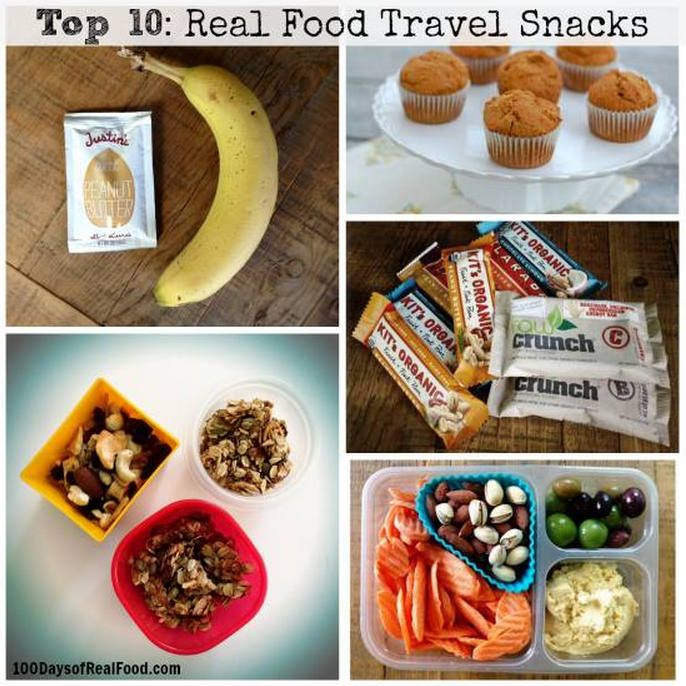 nine0005
nine0005
Food for a day, 2-3 days or a week
If you have to travel by train for about a day, then it is easiest to prepare a set. In such cases, there are no restrictions other than the basic ones. You can choose any suitable products that you want to eat on the go. The risk of them spoiling is minimal.
What can you take on the train from food for a day at meals:
- breakfast - any dairy products, cereals, cheesecakes, sandwiches, buns;
- lunch - meat or fish with a slight odor with any side dish, canned food, soups, pastries;
- dinner - cottage cheese, cold appetizers, salads, boiled pork, boiled meat, vegetables;
- snacks - cakes, fruit, nuts, biscuits, cereal bars.
In the case of longer trips, when the trip takes 2-3 days, a more careful approach to the formation of a meal set will be required. On the first day, you can also take any food suitable for the train. However, on the second or third day, part of it may already deteriorate. nine0005
However, on the second or third day, part of it may already deteriorate. nine0005
What food sets to cook for two or three day trips:
- the first day - any food from the list intended for a trip during the day will do, there are no differences in this case, including breakfast, lunch and dinner, collect the set can be to your taste;
- second day – cereals, cheese sandwiches, buns or other baked goods are suitable for breakfast, favorite main courses with vegetables or side dishes, fruits, cold snacks and bars are acceptable for lunch and dinner; nine0091
- third day - in the morning you will have to limit yourself to cereals and buns with a long shelf life, for lunch or dinner canned food, vegetables, bread and some products in a vacuum are suitable.
During three-day trips, it is recommended to diversify the food so that there is a choice of what to eat and dishes are not repeated. At the same time, you need to be sure that the selected products can be stored for 2-3 days without a refrigerator. Snacking during this time can be normal, as such food has a long shelf life without refrigeration. nine0005
At the same time, you need to be sure that the selected products can be stored for 2-3 days without a refrigerator. Snacking during this time can be normal, as such food has a long shelf life without refrigeration. nine0005
It is better to take tea and coffee with you, but you can also buy them from the conductor. However, the choice will be limited to regular tea bags. Coffee, on the other hand, is more often only instant from the category 3 in 1.
If a long-distance train runs for about a week, then the issue of food becomes even more serious. In the first three days, you can eat according to basic sets. In the subsequent time, many products will no longer be suitable for food, as their expiration date will expire.
What to make a meal kit for a trip during the week:
- canned food - various types of stews, including beef, pork, chicken and turkey, as well as canned vegetables or even soups;
- fresh vegetables or fruits - any kind, except for crops with a strong odor and a short shelf life;
- sweets - chocolate, biscuits, sweets or other sweets that can brighten up a train ride;
- dried fruits with nuts - a good source of carbohydrates and protein to meet the KBJU norm and a pleasant snack; nine0091
- instant meals - despite the harmfulness of instant noodles or mashed potatoes, they can partially diversify the diet during a long trip;
- baby food - special cereals and purees for children, which are kept closed even without a refrigerator.

In some cases it makes sense to purchase a ticket that includes free meals. Then the passenger will be brought to the compartment ready-made full-fledged meals. If this is not possible, and the food is over, then you can eat in the dining car, choosing something from the availability, or buy fresh food during a long stop on the way. nine0005
How to save food on the train
Reduce the worries about what to cook on the train from food and take it to the car with the right approach to the transportation and storage of food. Then on the third day you will be able to eat dairy products or full-fledged homemade food. And some types of food can be saved even for a week.
Ways to preserve food:
- correct packaging - most types of food are best packed in foil or parchment, since oxygen does not enter through cellophane, main dishes should be laid out in plastic containers, and it is better to wrap pastries with paper; nine0091
- thermal bag or thermal bag - allows you to save food without a refrigerator, you can eat it even after a few days, but models with increased cooling require a large battery.

If you have to travel by train in the summer, it is better to take a limited list of food. In the heat, vegetables, fruits, cold appetizers, a number of second courses, canned food and some pastries deteriorate more slowly. Dairy products are definitely not worth it. You won't be able to eat them after a few hours. nine0005
Food stored without refrigeration
In the lists of what to eat on trains, food that is stored without refrigeration is often highlighted. They can remain usable even after several days. Therefore, they are often taken on the train. Many of them are included in the basic sets of what you can eat on board.
Products not requiring a refrigerator:
- canned meat, vegetables, fruits, berries;
- dried or cured meat;
- fast food;
- sweets;
- specialized baby food;
- breakfast cereals;
- breads, snacks;
- nuts, dried fruits;
- cereal bars;
- condensed and powdered milk.
